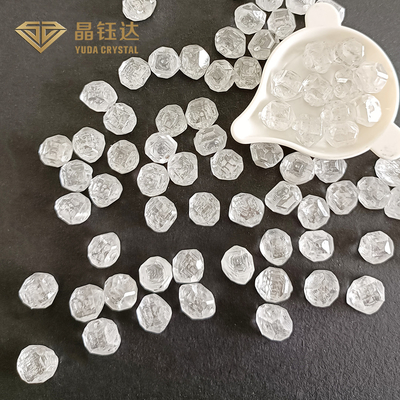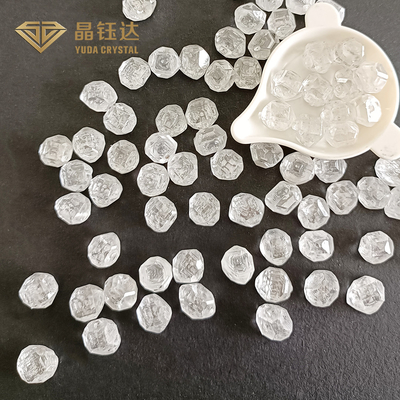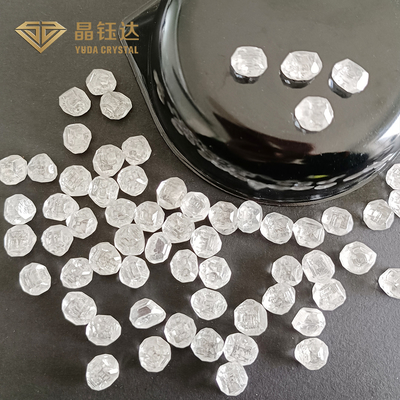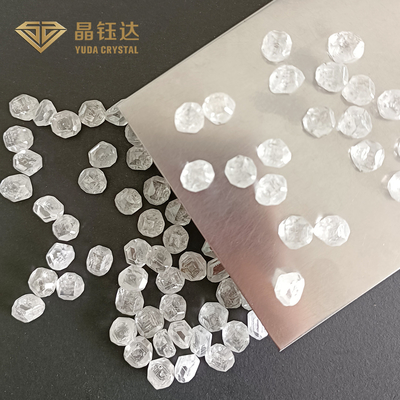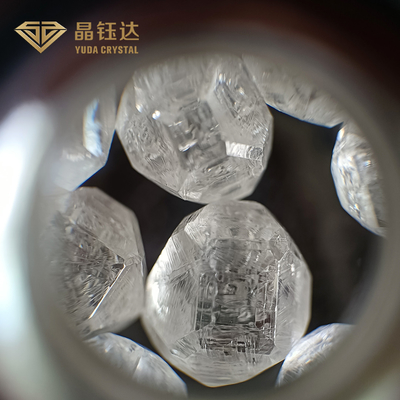VVS VS SI Purity DEF Clarity Round HPHT Lab Grown Diamonds For Making Jewelry
Lab Created Diamonds Description
Lab grown diamonds are also known as lab-made diamonds. In the lab, there are two main breeding methods: diamond CVD and HPHT.
Lab growth of diamond, also called synthetic diamond, synthetic diamond, diamond is produced in the laboratory, and natural diamond on the chemical composition, lattice structure and physical properties are exactly the same.
Laboratory growth diamond is simulating natural diamond synthetic diamond growth environment, by using high temperature and high pressure (HTHP) and CVD (chemical vapor phase precipitation) synthesis, also called the diamond growth. The lab-grown diamonds are real diamonds with the same physical properties, chemical composition and crystal structure as natural diamonds. They share the 4C certification standard and have been certified by IGI, GIA and other international authoritative appraisal organizations.
Diamonds are considered the hardest material in the world. Mohs hardness is divided into 10 grades, among which diamond is the highest grade. Since people know that diamond is made up of pure carbon that day on, more and more people are working on high temperature and high pressure in the laboratory diamonds. At present, the high temperature and high pressure lab diamond raw materials industry development is rapid, widely used in various industries and processing industry.
High temperature and high pressure synthetic diamond technology originated in the 1950s and was initially applied in aviation and military industry. In the past 10 years, the technology has achieved a qualitative leap in the quality and cost of gem-grade synthetic diamond to reach the market level.
Lab grown diamonds are created by mimicking the crystallization process of natural diamonds. Natural diamonds are formed in the natural environment and are often mixed with other elements, making some natural diamonds not completely transparent and able to take on a specific color. For example, some have pink diamonds, some have a touch of blue, and some have light yellow. HTHP diamonds are grown in the lab and have fewer impurities than natural diamonds, so they are cleaner and more transparent.
Parameters Of Lab Created Diamonds
| Product Name |
Synthetic (Lab created) diamond |
| Material |
Lab-grown |
| Color |
DEF |
| Shape |
Round |
| Technology |
HPHT |
| Diamond Cut |
Uncut |
| Payment Terms |
100% Payment In Advance |
| Diamond Carat Weight |
4CT-5CTS |
| Grade |
VVS VS SI |
| Shipping way |
DHL, FedEx, SF Express, UPS, EMS, TNT etc |
| M.O.Q |
Negotiable |
| Delivery Time |
1-7 Working Days Depends On Quantity |
| Payment Methods |
T/T, PayPal, Western Union, Bank Transfer |
| Used |
Jewelry (necklace,ring,earring) |
| Application |
For Cutting Lab Grown Loose Diamonds |
| Place Of Origin |
Zhengzhou,Heana,China |
Characteristics Of Lab Created Diamonds
Diamonds grown in a laboratory are grown in a laboratory. People use advanced equipment to simulate the natural diamond formation of the environment.
This formation process is the main factor that distinguishes lab-created diamonds from mined diamonds. Lab-grown diamonds can be mass-produced within a few weeks. As a result, laboratory-grown diamonds are much cheaper than natural diamonds of the same size and quantity.
The synthetic diamond is the product of the development of high technology. Synthetic diamonds is more environmentally friendly and saves labor costs.
| The Difference Between Lab Diamond And Natural Diamond |
| Attribute |
Lab-Created Diamonds |
Natural diamond |
Distinction |
| Chemical composition |
C(carbon) |
C(carbon) |
No |
| Refractive index |
2.42 |
2.42 |
No |
| Relative density |
3.52 |
3.52 |
No |
| Dispersion |
0.044 |
0.044 |
No |
| Hardness value |
90 GPA |
90 GPA |
No |
| Thermal conductivity |
2*103 W/M/K |
2*103 W/M/K |
No |
| Thermal property |
0.8*10-6 K |
0.8*10-6 K |
No |
| Light transmittance |
DEEP UV TO FAR TR |
DEEP UV TO FAR TR |
No |
|
Resistivity
|
1016 OHM-CM
|
1016 OHM-CM
|
No
|
|
Compressibility
|
8.3*10-13 M2/N
|
8.3*10-13 M2/N
|
No
|
Natural diamonds are created by nature, the result of billions of years of high temperature and pressure. Laboratory of rough diamond is produced in the laboratory, usually need a couple of weeks. The chemical difference is the same.
So how do you distinguish between laboratory rough diamond and natural diamond?
Raw lab-produced diamonds are not significantly different from natural diamonds. Even professional gemologists need special equipment to identify them. Through the amplification, professionals will be able to identify the growth of diamond inclusions in the laboratory and the nuances of the production.
From a scientific point of view, synthetic diamond and natural diamond exactly the same, the only difference is that the formation of their position.
Lab Created Diamonds Details


 Your message must be between 20-3,000 characters!
Your message must be between 20-3,000 characters! Please check your E-mail!
Please check your E-mail!  Your message must be between 20-3,000 characters!
Your message must be between 20-3,000 characters! Please check your E-mail!
Please check your E-mail! 


